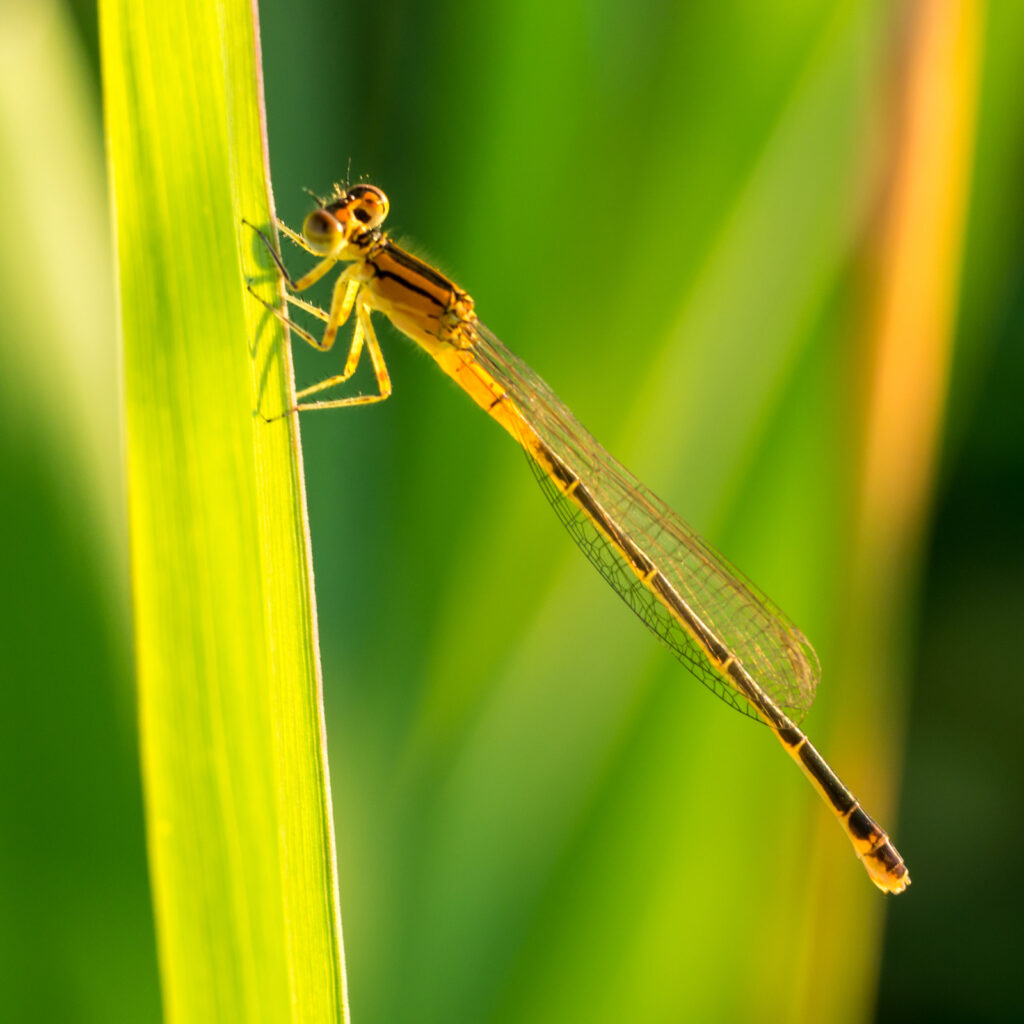The dragonfly and the damselfly are beneficial insects. Both dragonflies and damselflies are insect predators. Dragonflies feed on mosquitoes, gnats, flies, swarming ants, swarming termites, moths, and butterflies. Damselflies feed on mosquito larvae, aquatic insects, flies, mosquitoes, moths and some species also feed on beetles and caterpillars.

Both dragonflies and damselflies can catch their prey while in flight. They hold their prey in their hind legs which are covered with hairs and devour the prey by chewing.
Dragonflies and damselflies can be found throughout the United States and southern Canada.
Scientific name: There are numerous species of dragonflies and damselflies. The dragonfly belongs to the order Odonata, suborder Anisoptera; the damselfly belongs to the suborder Zygoptera.
How to identify the dragonfly and damselfly
Dragonflies and damselflies are very similar in appearance and one may be confused for the other.
Damselflies are lighter in build than dragonflies; dragonflies are sturdy looking.
Dragonflies hold their wings flat and away from the body when at rest; damselflies hold their wings folded and along or above the abdomen when at rest.
The flight of the dragonfly is direct and powerful. The flight of the damselfly is fluttery.
Dragonflies are ¾ to 2 inches long. In general, damselflies are smaller than dragonflies. The abdomen of the damselfly is proportionally longer than the dragonfly and the eyes of the damselfly are more widely spaced. The dragonfly has eyes that cover most of the head surface. Both have transparent wings and can be iridescent or metallic colored.
Dragonfly and damselfly life cycle
Dragonflies and damselflies breed near water or wetlands. They mate in flight. Females lay eggs in plants near or in water, directly on the water’s surface, or on mud at the water’s edge. Eggs commonly hatch in 7 to 9 days but sometimes may take months to hatch. Young dragonflies and damselflies are known as immatures; this is the nymph stage.
Immatures become adults through a series of 10 to 20 molts. Dragonflies mature between three months and 6 to 10 years depending on the environment. Damselflies live for 2 months to several months or more. Dragonfly and damselfly immatures molt on vertical plant stems near water, and nymphs feed on aquatic insect larvae.

How to attract damselflies and dragonflies
Dragonflies and damselflies live and breed near freshwater habitats. They are found in gardens and fields near ponds and bogs.
To attract dragonflies and damselflies to the garden maintain a pond or water feature with some clear surface area, vertical plant stems, and at least partial sun.
The main predators of dragonflies and damselflies are fish and frogs.
Related articles:
Vegetable Garden Beneficial Insects
Vegetable Garden Organic Pest Control
Vegetable Garden Diseases Problem Solver
Vegetable Garden Organic Weed Control
Garden Planning Books at Amazon:
- Vegetable Garden Almanac & Planner
- Kitchen Garden Grower’s Guide Vegetable Encyclopedia
- Vegetable Garden Grower’s Guide
- Tomato Grower’s Answer Book















